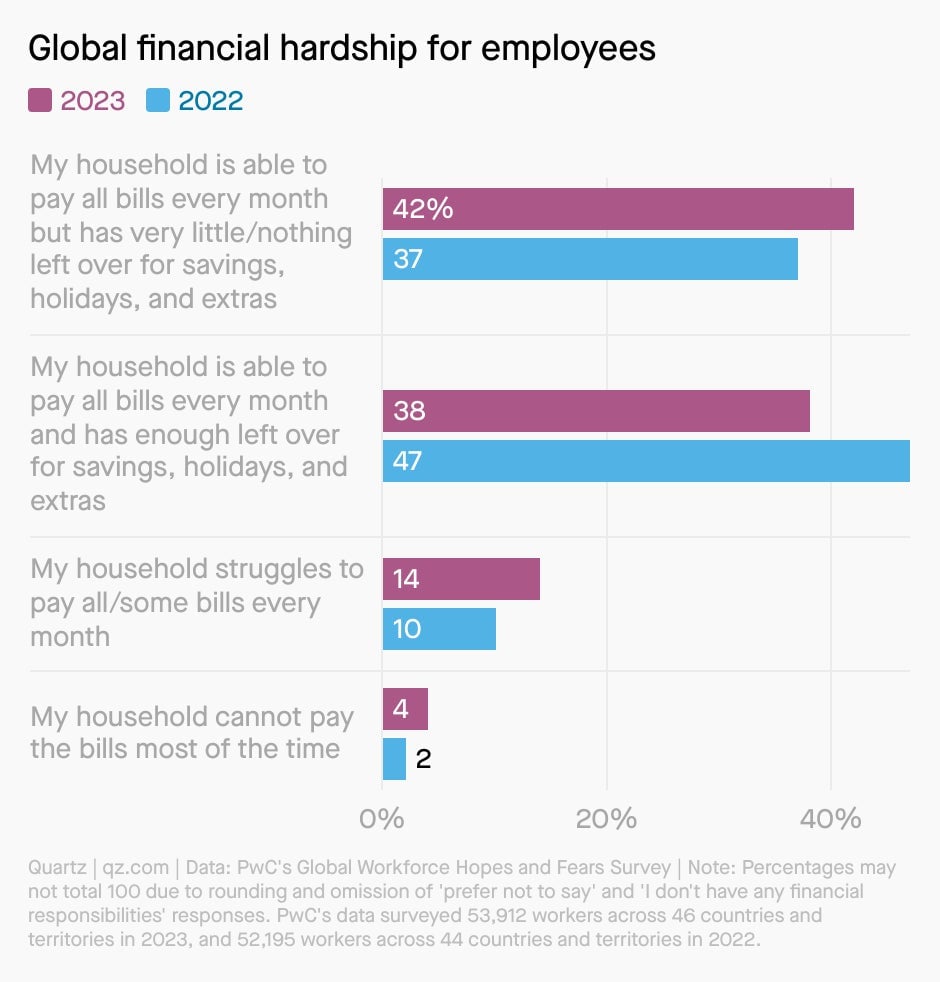Don't fear for diversity (yet)
Plus: Rainbow-washing reactionaries and ESG overhauls this week in The Memo.

Hello, Quartz at Work readers!
This week, the US Supreme Court is expected to strike down affirmative action, ending a forty-year precedent that allows universities to consider the race of applicants in their admissions processes.
But the decision’s effects may ripple beyond the reach of higher ed—and into the workplace. Once affirmative action has been overruled, the court could apply similar logic to corporate diversity programs next.
Employers and advocates are understandably worried about the future of their diversity, equity, and inclusion (or DEI) practices. Subsequent rulings could limit a company from saying it wants to promote more women in engineering positions, for example, or instituting guidelines that ensure at least one minority is interviewed for any position. Other initiatives—like racial equity audits, diversity targets, or sensitivity trainings—could be in doubt. Inclusion-oriented roles, like the chief diversity officer, could come into question.
But should affirmative action be overruled, companies shouldn’t rush to conclusions about their own programs “by saying, ‘Okay, now diversity is dead,’” says Bonnie Levine, a practicing employment attorney specializing in workplace DEI.
Regardless of how the rulings come down, she tells Quartz’s Gabriela Riccardi, it isn’t time for employers to preemptively pull back on their inclusion initiatives.
Quartz lays out a less reactionary plan ahead of the decision—along with what employers should know before rerouting their DEI programs. Find the first steps in our guide.
RAINBOW-WASHED OUT
1️⃣ in 3️⃣: The share of LGBTQ+ employees who say they’re looking to change jobs to a more inclusive employer.
That’s according to a new global report by Deloitte, which surveyed more than 5,000 LGBTQ+ employees from 13 countries about how inclusive they think their workplace is. The responses don’t paint a rainbow-rosy picture. Just check the numbers.
- <50%: The share of queer employees who feel comfortable being out with everyone at their job
- 35%: The slice of respondents who say their employer demonstrates commitment to LGBTQ+ in and out of the office
- 52%: The portion of respondents from ethnic minority groups who say they’re looking for a more inclusive employer
When companies aren’t supportive of their LGBTQ+ employees, workers may see plenty of reasons to walk. One case in point? Starbucks workers are currently waging a strike over Pride decor—or, rather, a lack thereof.
THE BOTTOM DOLLAR

Inclusion isn’t the only reason workers may be in search of new nine-to-fives. Cost of living is coming into play, too.
Thanks to rising costs, more employees report difficulties in paying their bills compared to a year ago—and now a quarter of workers across the globe are looking for new jobs with higher pay.
Quartz’s Clarisa Diaz digs into the new data showing financial hardship is more widespread worldwide in 2023 than in 2022.
ADIEU TO ESG?
“I’m not going to use the word ‘ESG’ because it’s been misused by the far left and the far right.”
—Larry Fink, CEO of Blackrock, in a June 25th interview
Blackrock CEO Larry Fink has long implied that purpose begets profit. But the leader of the world’s largest asset manager is now focusing on goals other than ESG.
That’s because to Fink, the term ESG—or environmental, social, and governance considerations, now equated with ethical business practices—has become politically charged, he said in a conversation at the Aspen Ideas Festival last weekend.
So what’s Fink looking at instead of ESG? Quartz’s Ananya Bhattacharya reports on the portfolio pivot.
YOUR WEEKLY WORK HACK
You can build (and share) accountability with one team exercise. You’ve probably encountered this common (and exasperating) moment during a shared project: When your colleague says, “Wait, I thought so-and-so was going to handle that?”
Many managers think their team has a clear understanding of who’s doing what. But great teams know that the lines can get blurry—either because roles aren’t clearly defined, or teammates have a different understanding of each others’ responsibilities.
But a six-step exercise can help you get around it. The trick: Lay out what you think you’re responsible for—then compare notes with the team. From there, you can define who really owns that part of the project.
QUARTZ AT WORK’S TOP STORIES
📊 The race gap in US employment has disappeared for one age group: workers 65 and over
YOU GOT THE MEMO
Send questions, comments, and new acronyms for ESG to [email protected]. This edition of The Memo was produced by Gabriela Riccardi.